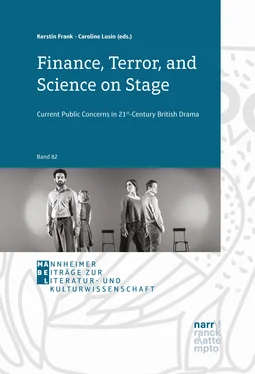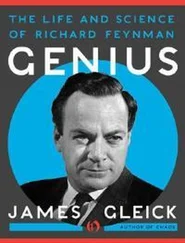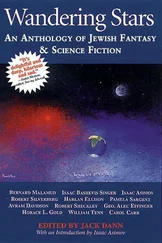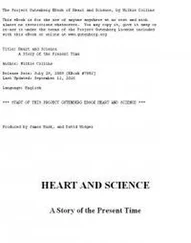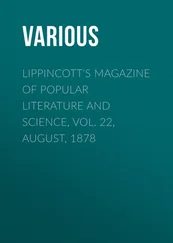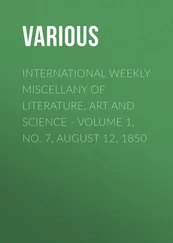Another peculiarity of the public debate on immigration is the recollection of Britain’s imperial past, the “wine and roses” of which The Clash sing. Nostalgia, of course, is not confined to one country or culture, but a sense of tradition that rests on commonly held assumptions of what is acceptable is palpable everywhere in the United Kingdom. Its manifestations range from the quaint (Henry VIII-faced rubber ducks) to the incendiary (Ulster Orange marches). Thus, during the campaign leading up to the Brexit referendum, there was no lack of voices that expressed a longing for the England before harmful immigration began; the definition of ‘harmful’ was and is a core concern of the debate, and it is duly mirrored in the play under review here. From this debate, a sense emerged in which desirable immigration from Commonwealth countries was contrasted with the noxious influx of Eastern Europeans. This may be due to familiarity: immigrants from India, Pakistan and Bangladesh as well as those from the Caribbean have been arriving in large numbers from 1948, when the troopship Empire Windrush brought some 500 migrants from Jamaica – not the first to arrive from the West Indies, but the best-reported ones.1
The Windrush episode is compulsory in any account of post-war immigration to Britain, however brief. Similarly, a reference to Enoch Powell’s “Rivers of Blood” speech on immigration in 1968 is required; when the Conservative politician cast himself as Virgil seeing “the River Tiber foaming with much blood” he was widely seen to condone, if not to invite, violence against immigrants. The speech has been quoted and misquoted ever since, but the rivers of blood had failed to materialise in the 20 thcentury. One remarkable facet of the history of immigration to Britain has been its comparative absence of violence. There have been riots, but even those of Brixton (London), Toxteth (Liverpool), Handsworth (Birmingham) and Moss Side (Manchester) in 1981, the fiercest instances of public unrest outside Northern Ireland, did not cause a single casualty. For all the belligerent rhetoric from left and right race relations in Britain until recently have been comparatively peaceful. Against this background, terrorism and the increase in hate crimes since the referendum, across the whole spectrum from xenophobic graffiti to (in one instance in 2016, deadly) attacks on Polish immigrants, is unusual and worrying. It is too early to discern the influence the debate on immigration accompanying that on Brexit will have on British drama and theatre, but to judge from past experience it will be there.
2. Immigration on the British Stage
It is, perhaps, an admissible generalisation that drama is uniquely suited to the presentation of conflict. The clash of rival positions is most evident if those are literally embodied by protagonists and antagonists. Thus the criss-crossing frontlines of any complex political debate can be made tangible; playwrights throughout the history of theatre have shown the power of such incarnations. These range from the emblematic figures of late mediaeval morality plays to the sophisticated characters (‘sophisticated’ not in the sense of socially advanced, but of ‘multi-dimensional’) of Brecht’s great tragedies. Narrowed down to the history of British immigration plays, the character spectrum stretches from Shakespeare’s Othello to Peter Flannery’s Singer (1989), via the captive Frenchmen in late Restoration comedy, to the stage Irish of 19 th-century London plays, and the American characters of the comedy of manners.
Yet all of these, even if they are stock figures with predictable ideas, actions and linguistic peculiarities, are individuals. They do not represent the ethnic group they belong to, they merely exhibit its alleged characteristics. This makes them recognisable and, in the case of comedy, instantly entertaining, but they are not there to make points about immigration. The same is even true for tragic characters: Othello may be used as a starting point for a critical investigation into the conditions of immigration in Elizabethan and Jacobean England, but the play itself does not address them. The Moor is stigmatised by his skin colour, but not seen as the representative of the wider problem Venice (or indeed London) had with Barbary mercenaries.
The closest English-language drama gets to the topic of mass human displacement before the 1980s is the Irish emigration play, starting with some of Dion Boucicault’s 19 th-century melodramas and encompassing plays like John B. Keane’s Many Young Men of Twenty (1946) and Brian Friel’s Philadelphia, Here I Come! (1964). Immigration as a subject in its own right only became visible on British stages once the immigrants themselves began to write. The work of Tanika Gupta may serve as a point of reference here, although plays by Kwame Kwei-Armah or Winsome Pinnock, to name but two other important contemporary playwrights, could be adduced.1 The immigrants in Gupta’s plays cover many reasons for displacement, from second-generation Indians with no intention of ‘going back’, to refugees fleeing the wars of the world, in Sudan ( White Boy , 2008), Afghanistan ( Fragile Land , 2003) or Rwanda ( Sanctuary , 2002). Gupta’s audiences are never supposed to forget that these people are not merely interesting characters whose tribulations, well-dramatised, may move, entertain and instruct, but that their fate is symptomatic of a global miscarriage of humanity (cf. Griffin).
3. Richard Bean’s England People Very Nice
Richard Bean was born in the Northern English city of Hull in 1956. He is a psychologist by training and came to writing for the stage relatively late in life; his first playtext, a libretto, dates from 1995. In 2003 he wrote his first outright farce ( Smack Family Robinson ). Since then, he has had some two dozen of his plays performed. Some of these are adaptations, including the hugely successful One Man, Two Guvnors (2011), a version of Carlo Goldoni’s Il servitore di due padroni (1753). Bean modernised the setting, but more importantly he gave the man/servant plenty of room and time to ad-lib and to take a more and more aggressive stance towards an increasing number of audience members, culminating in physical on-stage humiliation. When the present author saw the play, some shocked spectators left at the interval, too soon to realise (at the curtain call) that the most ill-treated ‘victim’ was in fact an actor – her distress performed so palpably as to redraw the boundaries of comedy. At first glance, one could argue that Bean just avails himself of the commedia dell’arte tradition of improvisation Goldoni himself used, but Bean’s confrontational stance is original. He actually tries to scandalise the audience.
Scandals have become a rare commodity in British theatres this century. No matter how outrageous the subject matter and its treatment in a new play, audiences seem to take it all in their stride. In 1980, Howard Brenton’s Romans in Britain led to calls for the reintroduction of censorship, and in 1994 Sarah Kane’s Blasted at least had the reviewers shellshocked and divided, but the wave of plays that followed soon had to accept the law of diminishing returns. In-yer-face theatre, in Aleks Sierz’ term (cf. Sierz), made transgression almost mandatory, but had to struggle more and more to recover any disturbing potential. At the same time, the numerous acts of sexual humiliation, cannibalism, torture, and defecation, accompanied by prolific verbal violence, were oddly unspecific. Kane’s play is set in a Leeds hotel room “so expensive it could be anywhere in the world” (Kane 3), and many of Mark Ravenhill’s or Anthony Neilson’s stage plays operate almost allegorically, too: They do not, as a rule, engage with concrete political situations the way docudrama and verbatim theatre did after the turn of the century, and they do not go in for subtle character studies. Situational humour is not their forte either.
Читать дальше
